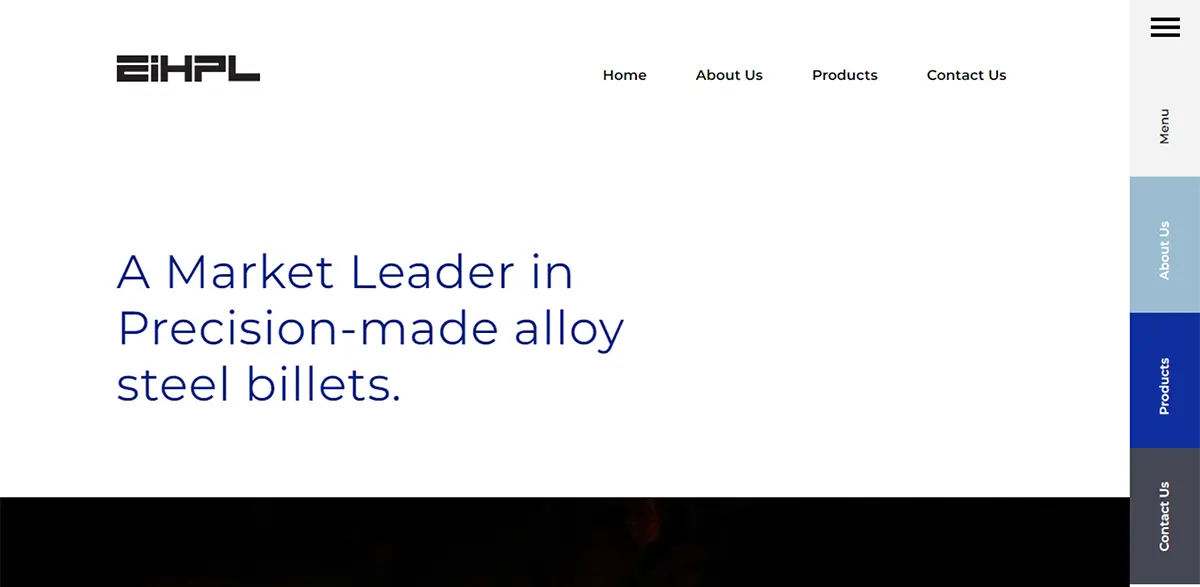Image formats are crucial in influencing how we view and distribute visual information in the dynamic world of digital content development. As we approach 2024, many picture formats will meet diverse requirements while balancing compatibility, compression, and quality. We'll dive into the wide world of picture formats in this thorough introduction, looking at their characteristics, applications, and place in the quickly developing digital environment.
The importance of image formats
Digital communication relies heavily on images, from websites and social media to digital art and scientific study. The format selection dramatically impacts the user experience, file size, and image quality. Content creators will be better equipped to make decisions based on their unique needs if they thoroughly understand the various picture formats that will be available in 2024.
What is the significance of image formats?
Selecting the ideal file format may seem simple for designers, but our chosen version can significantly influence the final goods we create.
Every variation—from PNGs and JPEGs to AIs and SVGs—has a distinct purpose and set of qualities. Some prioritize compression to minimize file sizes, like JPEGs. Others, such as TIFFs, concentrate on maintaining sharp, high-quality pictures. We can always choose the appropriate version for the task at hand if we know the differences between each format.
The file types we select are vital, whether we're making a website, designing a banner, or entering a picture in a photography contest. If we make a mistake, we risk producing an image that is either too grainy or too difficult to load. If we get it right, we can create aesthetically pleasing and functional graphics that improve user experience.
Now that we have covered the fundamentals, let's move on to the fun stuff.
Common image formats
JPEG (Joint Photographic Experts Group)
Overview:
JPEG is still a widely used image format because of its superior compression skills and ability to preserve usable image quality. It is the preferred option for images on the internet.
Pros:
- High effectiveness of compression.
- Broad platform and device compatibility.
- Ideal for pictures and graphics with gradients.
Cons:
- Artifacts could result from lossy compression.
- It's not the best for transparent photos.
PNG (Portable Network Graphics)
Overview:
PNG is a widely used format for images needing transparency and lossless compression. It's frequently applied to sharply edged images, logos, and symbols.
Pros:
- Lossless compression preserves image quality.
- Encourages openness (alpha channel).
- Perfect for illustrations with precise details.
Cons:
- Bigger files than those in JPEG format.
- Less effective when it comes to photos.
GIF (Graphics Interchange Format)
Overview:
Compact GIF files are frequently used for logos, icons, and basic animations. It is 256 color-restricted and supports transparency.
Pros:
- Allows for basic animations.
- It is possible to be transparent.
- Extensively supported in online settings.
Cons:
- Restricted colour scheme.
- It is not appropriate for intricate pictures or photos.
WebP
Overview:
Google created a brand-new WebP format that offers lossless and lossy compression. It seeks to deliver excellent quality at reduced file sizes.
Pros:
- Outstanding efficiency in compression.
- Supports modes that are both lossy and lossless.
- Appropriate for a variety of picture types.
Cons:
- Adoption might not be commonplace.
- Restricted assistance for specific apps.
Advanced image formats
HEIF (High-Efficiency Image Format)
Overview:
These days, HEIF is a popular picture format, particularly within Apple's ecosystem. Better compression, animations, and numerous photos in a single file are among the sophisticated features it enables.
Pros:
- High effectiveness of compression.
- Allows for numerous photos in a single file and animations.
- Practical storage for quick snaps.
Cons:
- Restricted assistance for specific apps.
- Maybe need extra codecs.
AVIF (AV1 Image File Format)
Overview:
AVIF is intended for high-quality compression based on the AV1 video codec. It keeps good image quality while providing remarkable compression ratios.
Pros:
- Superior effectiveness of compression.
- Excellent image quality, particularly for pictures.
- Browser support for this is growing.
Cons:
- Restricted assistance in specific older programs.
- Some formats may have slower encoding than others.
JPEG XL
Overview:
The purpose of developing a JPEG XL image format is to outperform conventional JPEG in terms of compression efficiency. It seeks to produce higher-quality images with reduced file sizes.
Pros:
- Increased effectiveness of compression.
- Supports modes that are both lossy and lossless.
- Intended to work with current JPEG operations.
Cons:
- Restricted use in specific contexts.
- Needs specialized software to function fully.
HDR (High Dynamic Range)
An additional file type for digital camera photos is HDR. HDR preserves colors, details, and shadows better than alternatives like RAW files. It enables photographers to keep characteristics of realism that could be lost in conventional imaging.
Even though Photoshop can handle HDR files, they must be transformed before being viewed online. It's because HDR files have limited web compatibility.
Pros:
- More excellent contrast, more hues,
- more detail than previous image formats from digital cameras.
Cons:
- Not compatible with every browser.
- It could be necessary to use specific equipment to process HDR content.
PSD — Photoshop Document
As its name implies, Adobe Photoshop users use the PSD file format to store image documents and work in progress.
Since it's not a web-safe picture format, none of the typical image viewers or editors in browsers can support it.
Pros:
- Transparency and all filters
- pathways and adjustments are reversible and completely adjustable.
Cons:
- Picture quality without loss.
- Large file sizes.
AI — Adobe Illustrator Artwork
Another picture format called AI was created expressly by Adobe to store project states in addition to images.
Like PSD, it isn't intended for web use and isn't compatible with most basic image viewers or browsers.
AI files can be easily scaled without sacrificing quality, unlike PSD files.
Pros:
- Every stroke
- Forms and lines
- Filters can be reversed and customized.
Cons:
- You can easily resize the illustration sizes.
- Big file sizes.
Which image file types work the best?
Your intended medium and imaging requirements will determine the optimal image file format. Let's focus on the finest file formats for working with web and lossless images, sending pictures, and printing to help you choose the best fit.
Ideal formats for images on the web.
Web photos must adhere to strict dimensions and specifications to display correctly on various devices and monitors. The JPEG (or JPG), GIF, and PNG image formats are the best for web images. You can compress and modify these file formats to suit your online requirements.
One of the most popular picture formats on the web is JPEG, but to ensure your photos show up correctly, you should pay attention to the size and resolution. GIFs load rapidly and are ideal for drawing visitors' attention to websites with subtly moving or animating content. Lastly, with support for up to 16 million colours and transparency features, PNG is a flexible choice for your website.
Top formats for lossless images.
It is possible to compress lossless images without sacrificing necessary metadata or changing the way they look graphically. The most optimal lossless image formats are BMP, TIFF, GIF, and PNG. These file formats may have reduced resolutions, but they can be altered or compressed without affecting the quality of your images.
The best picture formats for sending photos.
The ideal format for sending images can vary depending on how you plan to share them. When sending pictures via email or the internet, JPEG (or JPG) works best. These days, phones save data in the High-Efficiency Image Container (HEIC) format, while online applications make it simple to convert HEIC to JPEG. Sending numerous photos at once is great for PDFs, which can be shared via email or a link to a cloud storage account.
Ideal picture formats for printers.
JPEG (or JPG), PDF, and TIFF are the best image formats. You should choose a format that, when printed, maintains the appearance and quality of your photo based on your image resolution and file size. Higher-quality photographs print better, so you might need to change the resolution to fit your desired print proportions.
Choosing the Right Image Format
Factors to Consider
Use Case:
- For images: WebP or JPEG.
- PNG or WebP is suitable for transparent images.
- For animations, use AVIF, GIF, WebP, or HEIF.
Quality vs. File Size:
- Consider both the file size limitations and your desire for high-quality images.
- For increased efficiency, consider more recent formats such as AVIF and JPEG XL.
Browser and Application Support:
- Make sure it works with the apps and platforms you want to use.
- Verify whether newer file formats like AVIF and JPEG XL are currently supported.
Loading Speed:
- Aim for quicker loading times when optimizing, particularly in online settings.
- Use practical file formats like WebP, which offers high quality and reduced file sizes.
The Future of Image Formats
The landscape of image formats is constantly changing as technology progresses. The following are some future trends and projections:
Increased adoption of next-gen formats:
- As support expands, expect more people to use formats like AVIF and JPEG XL.
- Integration with widely used platforms and apps.
Improved compression techniques:
- More advancements in research and development will result in compression methods that are even more effective.
- File size reduction without sacrificing the quality of the images.
Enhanced support for HDR and wide colour gamut:
- Wider colour gamuts and improved support for high dynamic range (HDR) will probably be the main priorities for next-generation formats.
- Enhanced visual experiences for HDR display users.
Standardization efforts:
- Persistent work on standardizing image formats to guarantee interoperability across platforms.
- Leaders of the industry are working together to create global standards.
Integration with emerging technologies:
- Image formats will be able to meet the needs of emerging technologies like augmented reality (AR) and virtual reality (VR).
- Improvements were made to the quality of the images for immersive experiences.
Conclusion
Selecting the appropriate picture format in the ever-changing world of digital material is essential to providing an engaging and practical user experience. Knowing the advantages and disadvantages of different formats will help content makers make wise choices as we move into 2024 and beyond. To confidently handle images in the digital world, embrace next-generation formats and watch for new standards and technology.
Hexadesigns is a web design company in Kolkata, dedicated to providing solutions that align with your business objectives. With our expertise in website design and development, we strive to deliver websites and web applications that effectively support your goals. Trust us to create a website that not only showcases your brand but also drives success for your business. Contact us today.
Next PostPrevious Post







